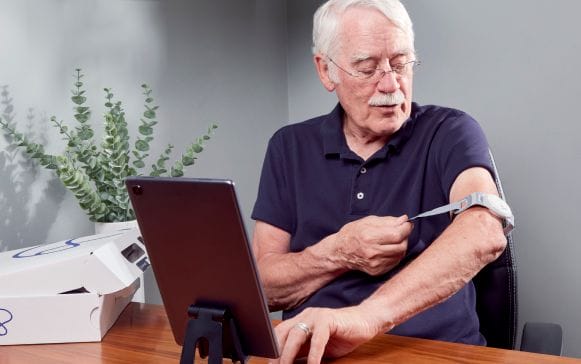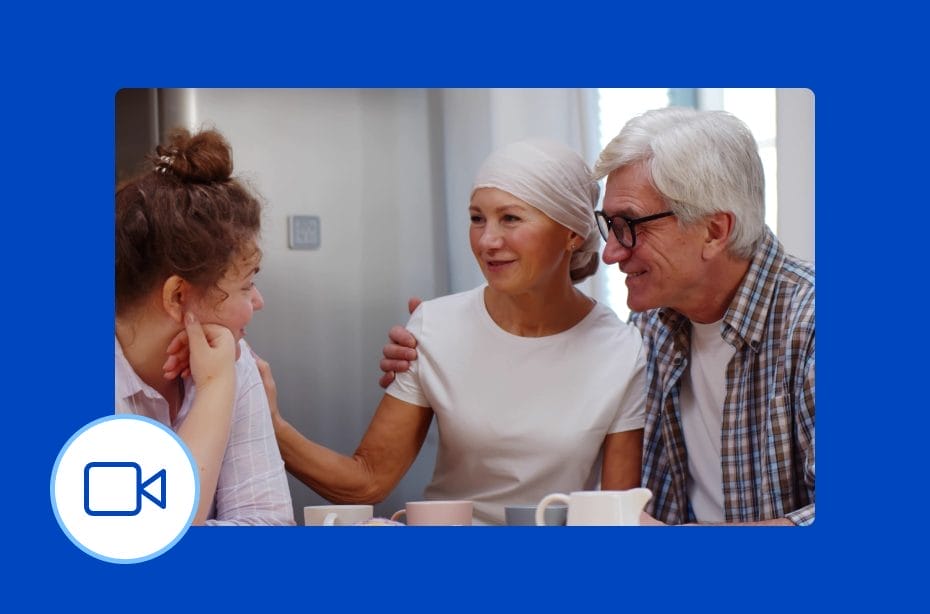Why we Built Community by Current Health
We started Current Health for one purpose: To identify disease early so that patients can receive preventive, optimal treatment at the earliest possible moment. It is our mission to preserve quality human life for as long as possible, globally.
Last month we launched Community by Current Health, an initiative dedicated to achieving this mission by expanding insight into longitudinal human health through large-scale data and real-world biomarker collection. Community is a crucial step in achieving our vision of a world where everyone has the chance at a longer, healthier life, free from illness and disease.
Through Community, we are generating the world’s largest dataset of longitudinal insight into health outside the hospital. This allows us to continue to build, develop and improve predictive algorithms that identify the warning signs of disease and illness early.
Why does any of this matter?
Across the world, our population is growing older. The number of people over 60, doubled between 1980 and 2017 and is expected to more than double again by 2050. As a result of living longer, we’re experiencing far more chronic diseases that require long-term healthcare which must be delivered in an equitable and sustainable way.
As costs continue to increase (not to mention the projected depletion of the Medicare trust fund by 2024) governments, payers and health systems are seeking to transition more health care delivery into the home. COVID-19 has further accelerated this shift, in particular, by increasing patient demands for more services within their own, rather than in the hospital.
In many respects, the shift from hospital to home is returning healthcare to its natural delivery model. In the 1930’s, 40% of the patient-doctor interaction was within the patient’s own home. By 1980, it was less than 1%. This shift was largely driven by the centralization of both expensive capital equipment, like MRIs, and increasingly sub-specialized physicians. However, modern technology, along with new payment models and the need to reduce fixed costs, is driving a decentralization of healthcare delivery into the home once again.
As health systems move much larger, complex populations to the home, a number of problems emerge:
- There becomes a critical need to be able to observe patient health at home
- By capturing data outside the hospital, the pure amount of patient data increases exponentially to the point beyond which any human mind can interrogate or assimilate.
- The need for better automation and decision support to is required to enable delivery at scale
Community is one part of Current Health’s effort to solve these three problems.
Developing better insights with better representation
Developing disease prediction and disease tracking algorithms requires high-quality, validated, labelled and generalized datasets. This can pose a problem for traditional clinical research methods where recruitment is often limited to areas surrounding academic research institutes. Current Health makes it possible for anyone to contribute to lifesaving research, regardless of their location.
This is important because, ultimately, those populations who most need access to high-quality healthcare are often those on the other side of the digital divide, meaning they are left out of artificial intelligence (AI) training datasets. Those populations aren’t being recruited into traditional clinical research, they don’t have home internet, they don’t have a smartphone. But it’s these populations who most desperately need healthcare.
Ultimately, success in sustainable healthcare delivery in future will come from providing early, preventive care to all populations, but especially those most in need. Community and Current Health are both designed to ensure equitable access for all. At Current Health, we are doing everything we can to make our product accessible to all, including providing home internet access and smartphones.
Capturing real-world data from patients at home
In academic circles, the term “ecological validity” refers to how relevant a study’s findings are to the real world. Traditional clinical research has created an artificial barrier between the clinic and a patient’s lived experience. Most researchers only see a snapshot of a patient when they present in the clinic during their weekly check-in.
But disease doesn’t occur around a weekly schedule. To effectively deliver large scale healthcare at home, it is essential that we capture what health looks like at home, which is longitudinal. It is essential that we understand the progression of disease over time, at home. That’s exactly what we’re doing with Community, allowing longitudinal capture of data at home to build, train and develop better algorithms that improve health and care.
Improving clarity by increasing data coverage
We’re not not only expanding where data is captured, but when it is captured. Through continuous, passive monitoring we can understand natural variations in an individual’s physiology. Beyond the pure volume of biomarkers, this offers insights into patient health throughout the day, not just when they choose or are asked to report vital signs. 24/7 monitoring allows us to understand natural variations of health, influenced by things as simple as circadian rhythm. It can reveal confounders, such as sleep apnea, that may otherwise have gone undiscovered and impacted patient and study outcomes. Remote continuous monitoring can make data gathering richer, reduce bias and lift research quality. It’s coverage allows us a more complete picture of patient health.
AI has a crucial role to play in the scalable delivery of healthcare at home, helping to identify from multi-thousand patient populations the single patient who needs advanced, preventive treatment. Technology platforms, like Current Health, must live up to our side of the bargain. We must be totally confident that we’ve built algorithms that can make sound predictions for the entire population. Community is a huge step forward in making that a reality, as we create a new healthcare paradigm built around truly preventive medicine.
For further information on Community, including how to participate in our fully remote clinical trials, visit our dedicated site.


